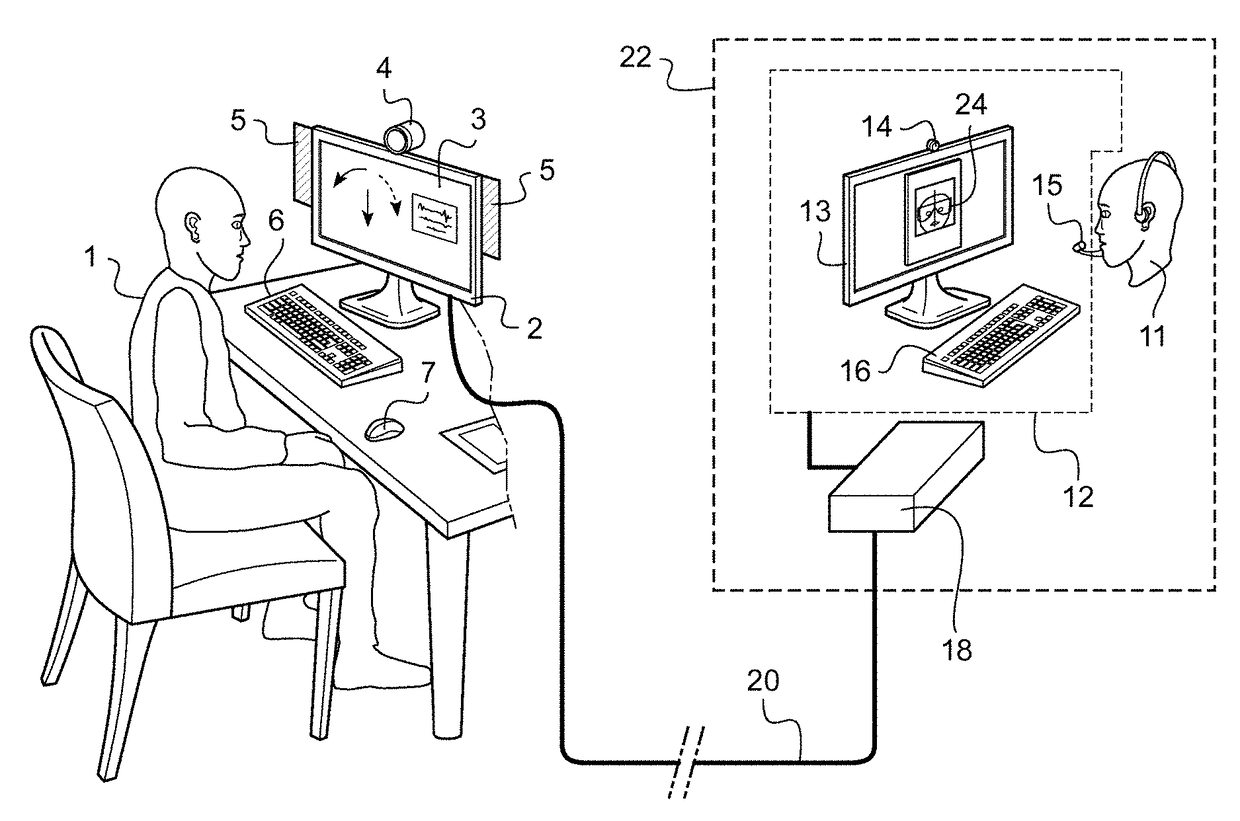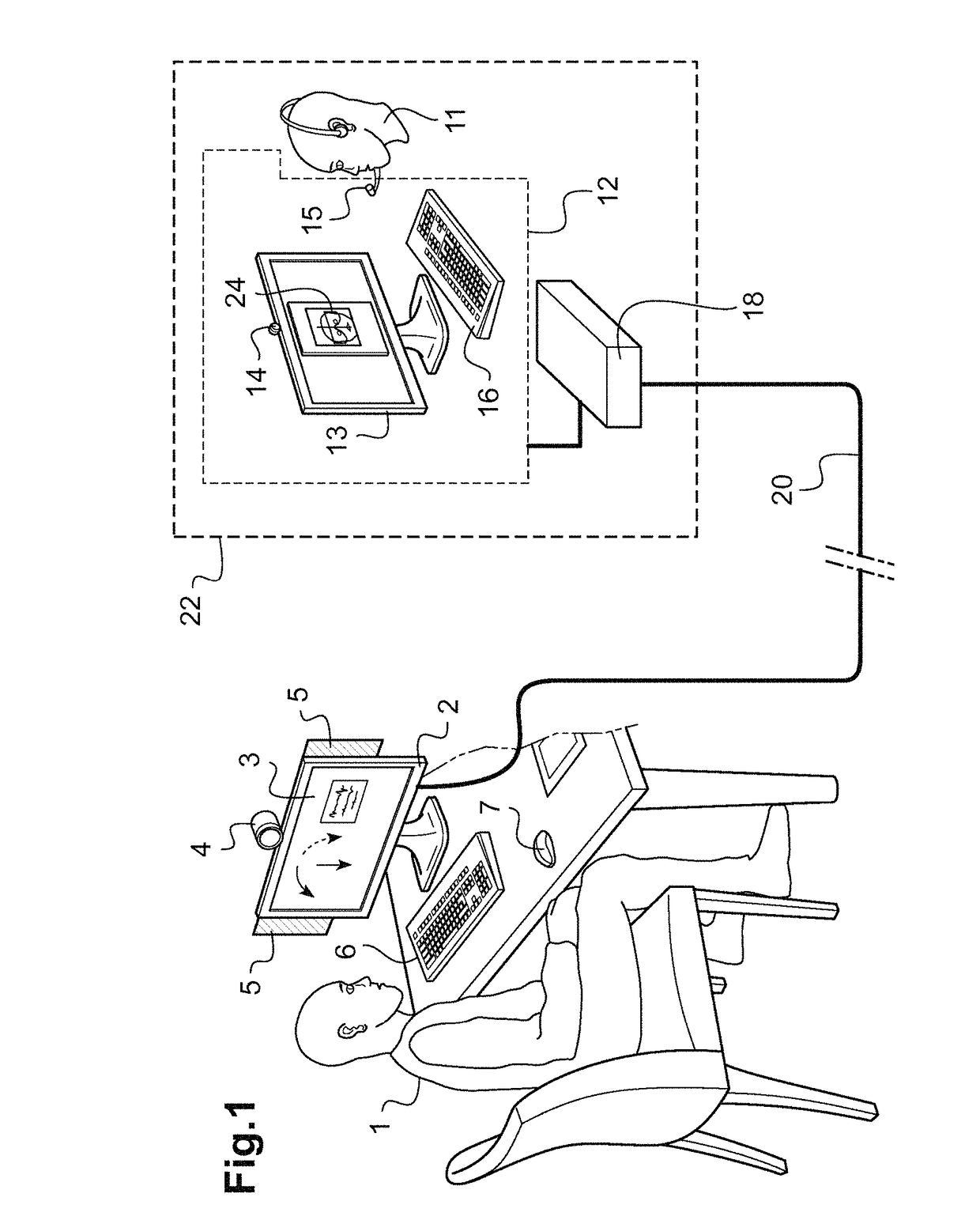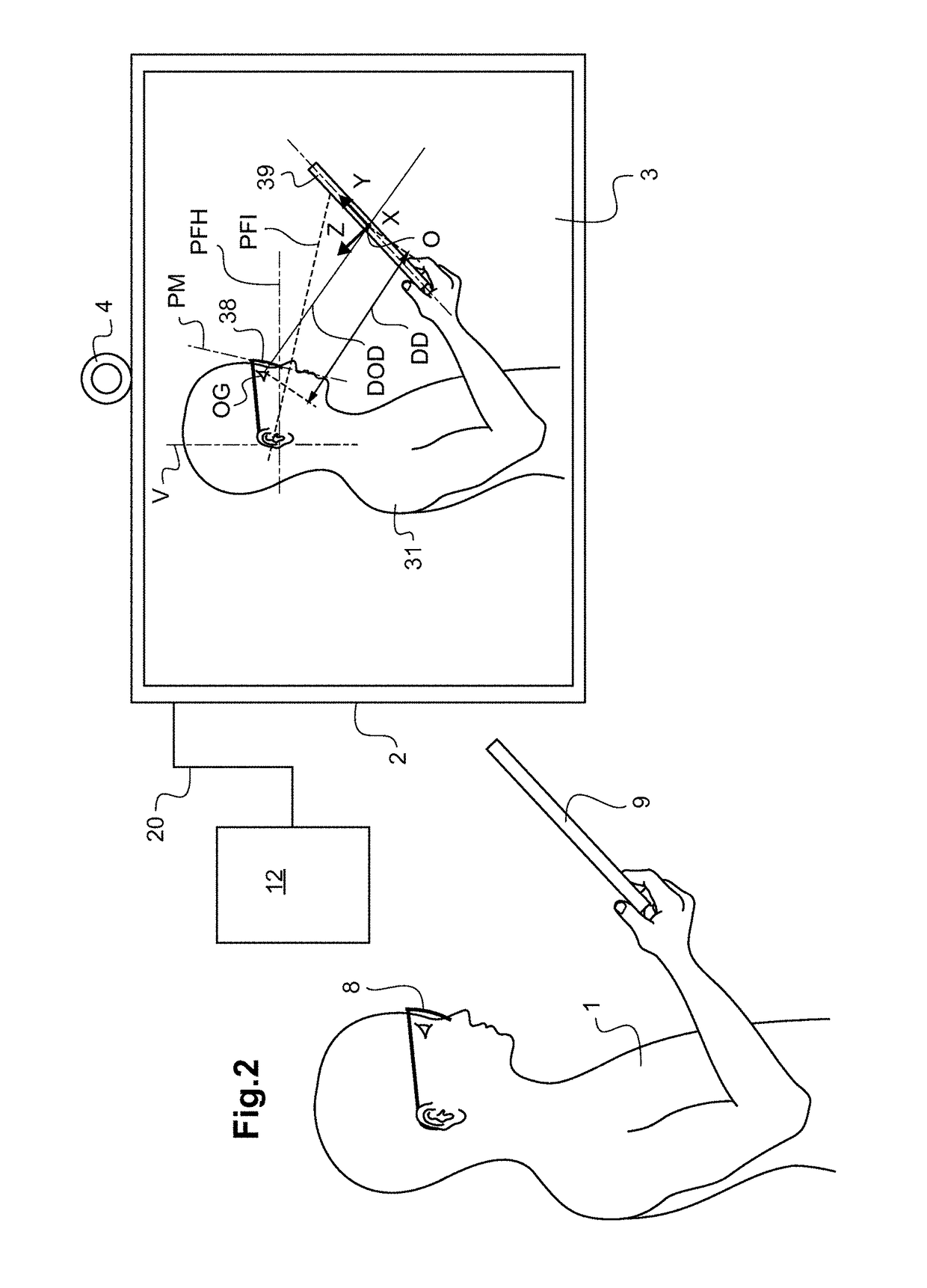Method for determining at least one value of a parameter for customising a visual compensation device
a visual compensation device and parameter value technology, applied in the field of optometry, can solve the problems of not being able to take certain measurements in a limited time period, and conventional optometric methods generally do not take into account user movement-related behaviors
- Summary
- Abstract
- Description
- Claims
- Application Information
AI Technical Summary
Benefits of technology
Problems solved by technology
Method used
Image
Examples
Embodiment Construction
[0056]The following description, given with regard to the appended drawings and by way of nonlimiting example, will allow the invention and how it may be implemented to be better understood.
[0057]In the appended drawings:
[0058]FIG. 1 schematically shows an exemplary implementation of the method of the invention;
[0059]FIG. 2 is a profile view of the individual holding in his hand an object in a near-vision posture and of a terminal according to another exemplary implementation of the invention; and
[0060]FIG. 3 shows a chart of the steps of a method according to one embodiment of the invention.
[0061]Device
[0062]FIG. 1 schematically shows the elements of a device employed to determine or measure at least one value of a personalization parameter of a piece of vision-correcting equipment intended for an individual 1 or user.
[0063]The device comprises, on the one hand, an audiovisual terminal 2 and, on the other hand, a checking terminal 12, which are located remotely from each other and ...
PUM
 Login to View More
Login to View More Abstract
Description
Claims
Application Information
 Login to View More
Login to View More - R&D
- Intellectual Property
- Life Sciences
- Materials
- Tech Scout
- Unparalleled Data Quality
- Higher Quality Content
- 60% Fewer Hallucinations
Browse by: Latest US Patents, China's latest patents, Technical Efficacy Thesaurus, Application Domain, Technology Topic, Popular Technical Reports.
© 2025 PatSnap. All rights reserved.Legal|Privacy policy|Modern Slavery Act Transparency Statement|Sitemap|About US| Contact US: help@patsnap.com



